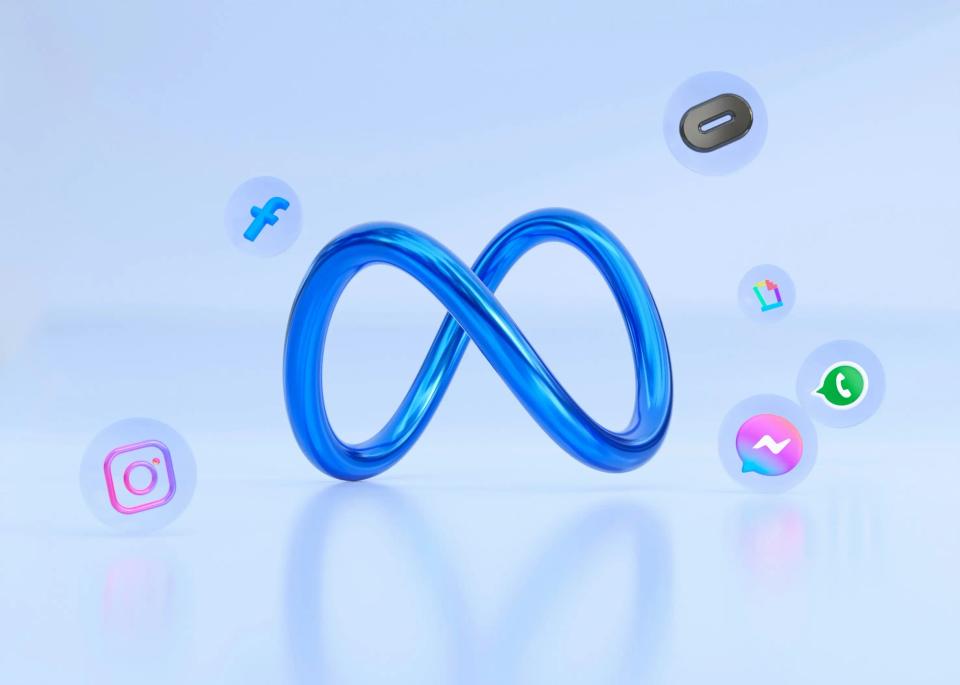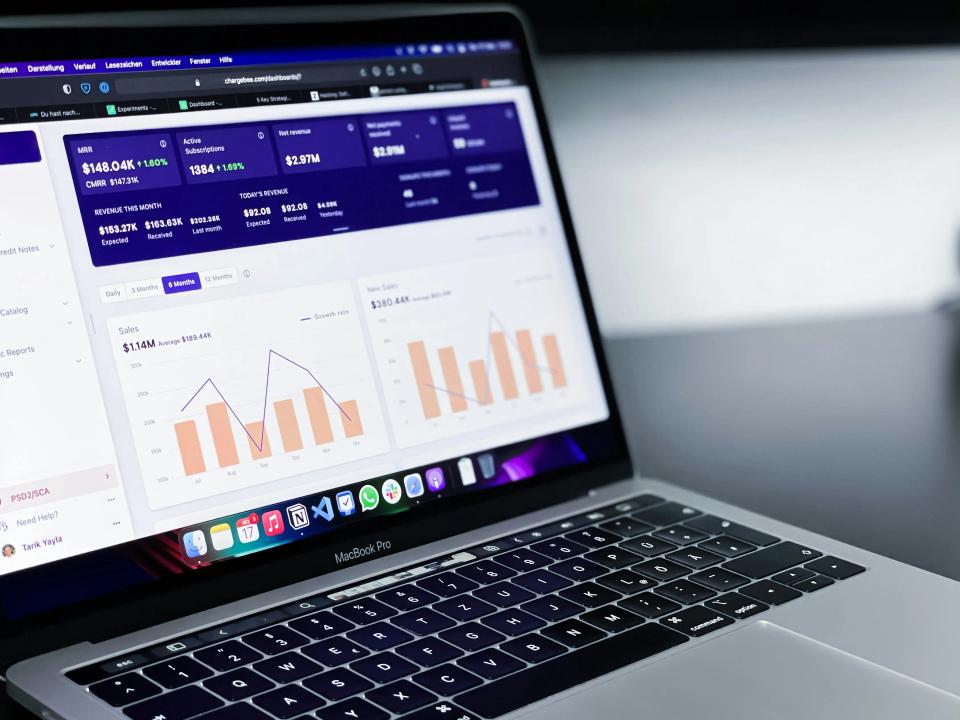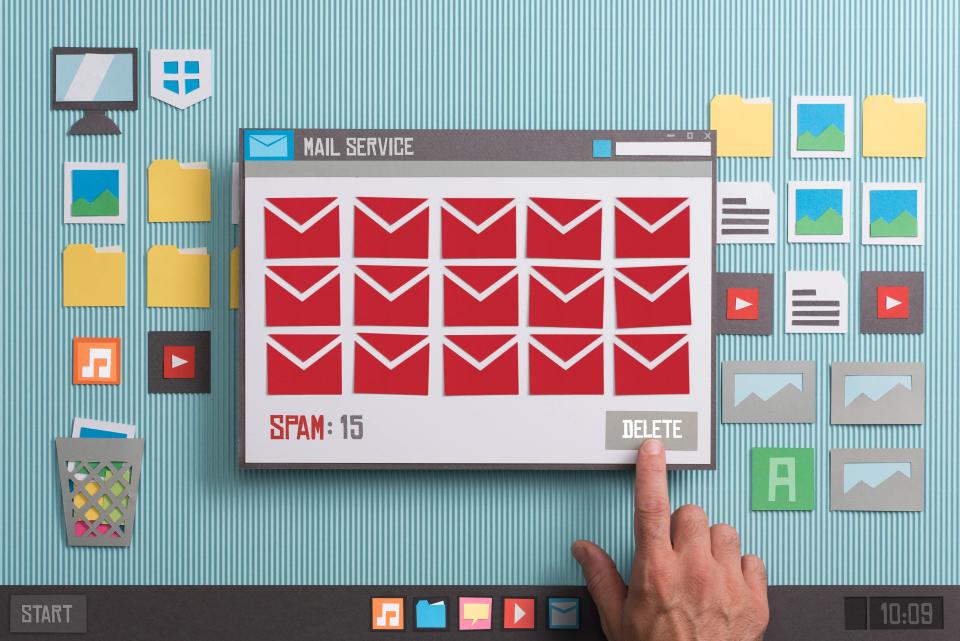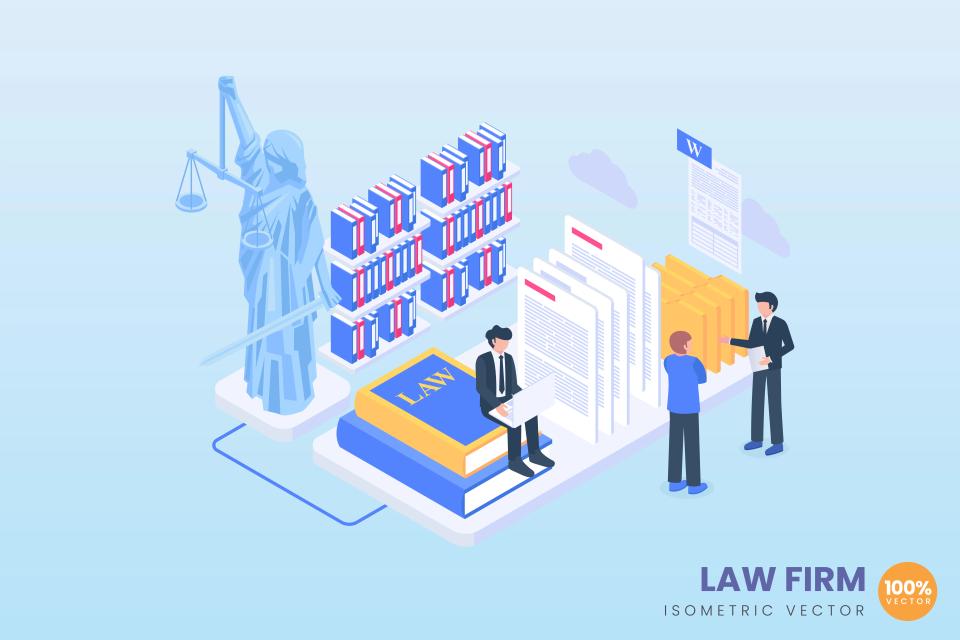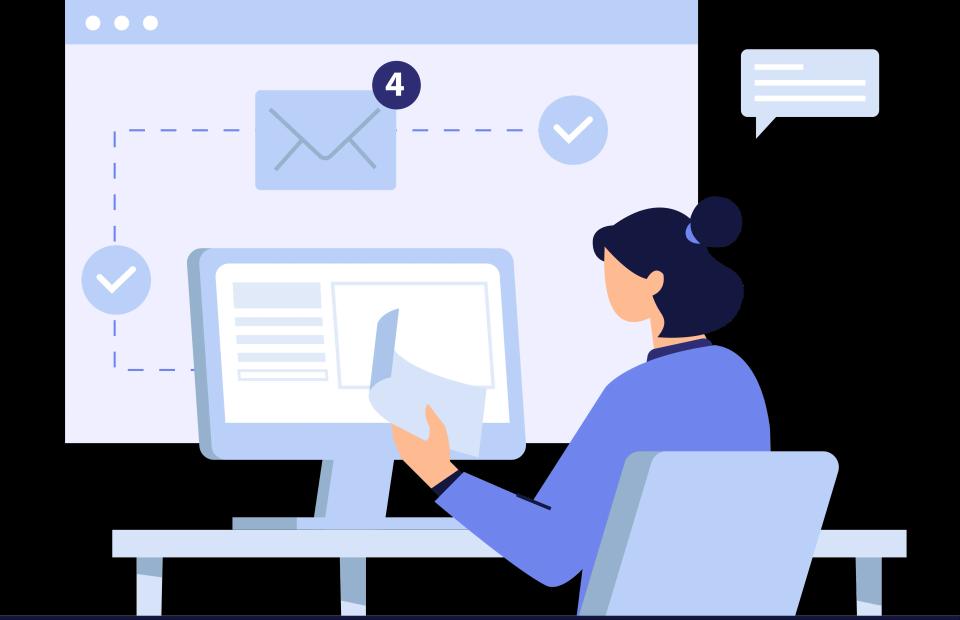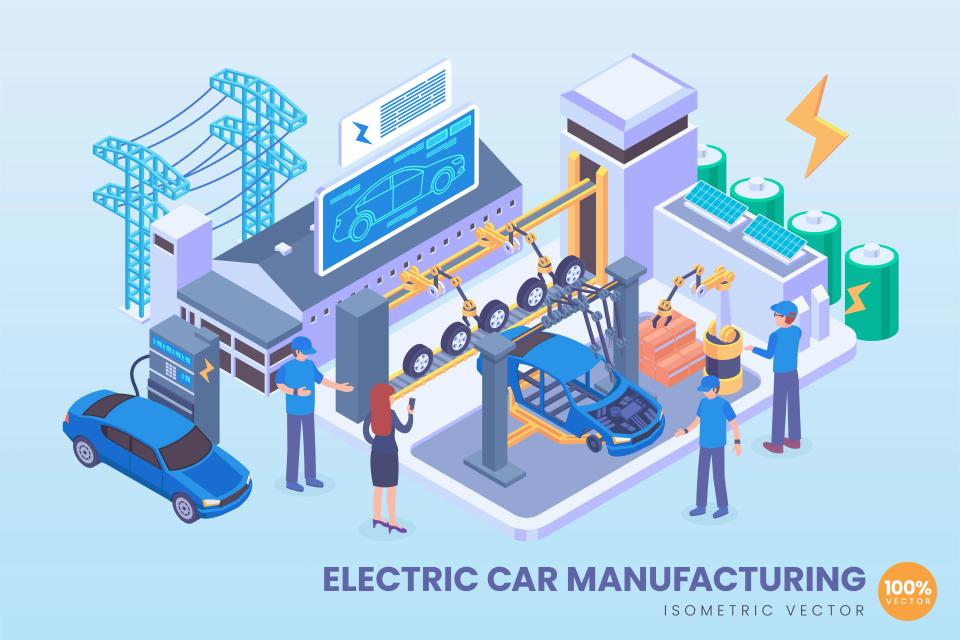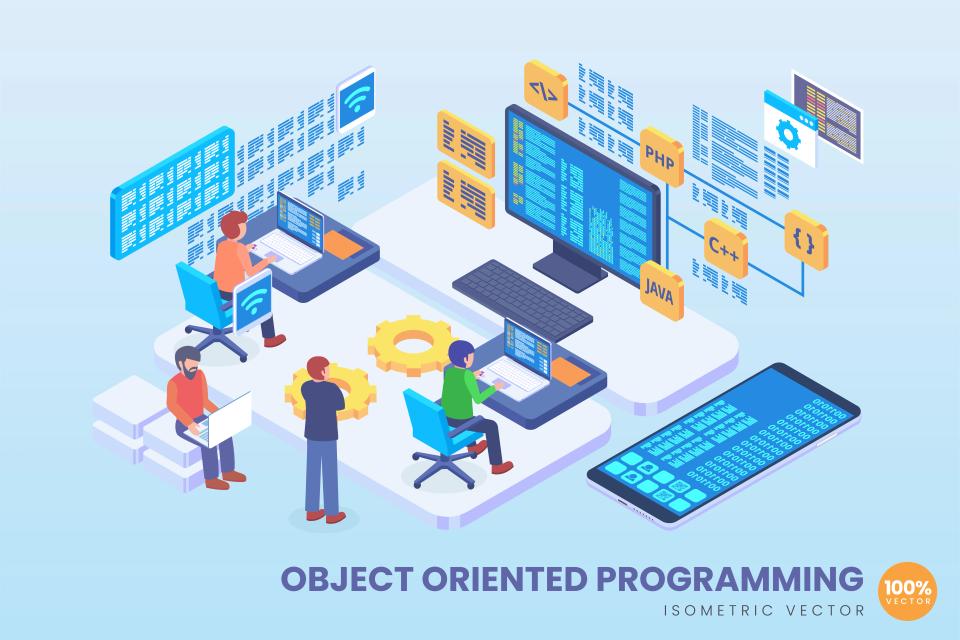Are you tired of the endless scramble for top talent? Does the thought of finding your next big client keep you up at night, a knot of anxiety tightening in your chest? You're not alone; the recruitment game has changed, the old playbooks are gathering dust, and traditional methods feel like shouting into a hurricane – exhausting and utterly ineffective.
The brutal truth is, your ideal candidates and perfect business clients are out there, actively searching. But they're bombarded, lost in a deafening digital cacophony. You need a scalpel, not a sledgehammer; a direct, ruthlessly efficient way to slice through the noise and connect with the precise individuals who can transform your agency. Without it, you're just burning cash and precious time, watching opportunities slip through your fingers.
Imagine a tool so potent, so intelligent, it places your most compelling job openings and irresistible service offerings directly in the line of sight of people already looking for them. That power, that precision, is Google Ads. It’s not just another advertising platform; it's your strategic Excalibur in the fierce battle for talent and clients, ready to revolutionize your recruitment reality. Get ready to discover how to pinpoint ideal candidates with uncanny accuracy, unveil the secrets to crafting ad copy that makes businesses demand to work with you, and most importantly, learn to track every single penny, ensuring a return on investment that will make your competitors weep.
Why Google Ads is a Game-Changer for HR & Recruitment Agencies
Reach Active Job Seekers Instantly
Stop the agonizing wait for candidates to stumble upon your job boards or career pages. With Google Ads, you intercept individuals at the very moment their fingers type those golden keywords – "software developer jobs London," "remote marketing manager roles." Google processes a mind-boggling 5.6 billion searches every single day, and a massive chunk of those are job seekers hungry for their next opportunity. This means your meticulously crafted ads appear before a highly motivated, action-oriented audience, primed to apply.
Attract Eager Business Clients
But the magic doesn't stop with candidates. Google Ads is your direct, unfiltered pipeline to businesses desperately crying out for your recruitment expertise. Picture this: a CEO, frustrated with a critical vacancy, searches "best executive search firm for tech startups." Bam! Your agency's ad appears, a beacon of hope, an immediate solution. You instantly become the answer to their most pressing hiring headaches, positioning your agency not just for survival, but for aggressive, undeniable growth.
Precision Targeting: Your Secret Weapon
Forget the old "spray and pray" marketing tactics that drain your budget and deliver pitiful results. Google Ads gifts you the power of surgical precision. You can zero in on your ideal audience by geographic location (down to the postcode!), demographics, interests, and, most critically, the exact keyword phrases they use when searching for jobs or recruitment services. This targeted audience segmentation ensures your ads reach job seekers by demographics, intent, and location, slashing wasted ad spend and flooding your inbox with genuinely qualified leads, be they candidates or clients.
Measurable ROI: Know Your Numbers, Own Your Success
Are you sick of marketing initiatives that feel like tossing money into a black hole, with no clear idea of what's working? Google Ads shatters that uncertainty with crystal-clear, irrefutable accountability. Every click, every application submitted, every client inquiry generated can be meticulously tracked, giving you an unvarnished, real-time view of your return on investment. This real-time bidding and measurable ROI make it ideal for tracking applications and client leads, empowering you to make data-driven decisions and continuously optimize your campaigns for peak profitability.
Speed & Immediacy: Win the Race for Talent
In the breakneck, hyper-competitive world of recruitment, speed isn't just an advantage; it's a necessity. Google Ads delivers near-instantaneous visibility, catapulting your job postings and service offerings to the top of search results. Launch a campaign this morning, and by this afternoon, you could be sifting through applications for that "impossible-to-fill" role or scheduling consultations with eager new clients. This immediate visibility helps agencies compete effectively in fast-paced talent markets, leaving slower, traditional methods choking on your dust.
Amplify Brand Visibility: Become Unforgettable
Even if a prospect doesn't click your ad immediately, the consistent appearance of your agency's name in relevant search results builds powerful, subconscious brand recognition. Think of it as digital osmosis. Furthermore, Google's vast Display Network, which reaches an incredible 90% of global internet users, allows you to deploy visually striking image or video ads that significantly enhance your employer branding and solidify your agency's profile. This pervasive visibility ensures that when candidates are finally ready to make a career move, or when businesses face their next hiring challenge, your agency is the first one that springs to mind.
Strategic Keyword Research: The Foundation of Success
Understanding Dual Intent: Candidates and Clients
The true alchemy of Google Ads for recruitment agencies lies in deeply understanding who is typing into that search bar and, more importantly, what burning desire fuels their search. You're not just casting a wide net into a single pond; you're a master angler, strategically placing irresistible bait for two distinct, yet equally valuable, catches: top-tier talent and high-value business clients. This dual imperative demands a sophisticated, nuanced keyword strategy, meticulously designed to capture both sides of the recruitment coin, ensuring no opportunity is left on the table.
Candidate-Focused Keywords: Tapping into Job Seeker Psyche
To attract the best candidates, you must think like a job seeker. What specific terms, phrases, or questions would they use when hunting for their next career adventure? Keywords such as “software engineer jobs NYC” are gold, as this level of precision targeting by role dramatically improves the quality of applicants you receive. Combine specific job titles with desired locations (e.g., “marketing manager remote UK”), explicitly state if roles are remote, or focus on particular in-demand skills like “java developer positions with fintech experience.”
Don't overlook the power of industry-specific searches combined with location. Someone searching for “tech jobs Berlin” has a crystal-clear intent, an intent you can precisely match using geo-modified keyword terms. The more closely your keywords mirror their thoughts, the more irresistible your ad becomes.
Client-Focused Keywords: Solving Business Pain Points
When your target shifts to businesses seeking recruitment services, your keyword mindset must pivot to their urgent needs and operational pain points. What keeps HR managers or CEOs awake at night? Companies might be searching for specific service providers like “recruitment agency for startups London” or “executive search firm healthcare industry.” Foundational seed keywords such as “HR consulting services” can be powerfully expanded using tools like AnswerThePublic, which helps uncover a wealth of valuable top-of-funnel queries that indicate early interest.
Furthermore, delve into problem-based searches that signal an immediate, pressing need your agency is perfectly poised to solve. Keywords like “hire top sales talent quickly” or “find qualified engineers for niche project” are buying signals, indicating a client desperate for your expertise.
Tools & Techniques: Your Keyword Arsenal
You're not navigating this keyword labyrinth blindfolded. A powerful arsenal of tools stands ready to guide your strategy and illuminate the path to high-intent searchers. The indispensable Google Keyword Planner is your trusted ally, offering deep insights into search volumes, competitive landscapes, and estimated cost-per-click (CPC) for your target terms. Utilizing its “Expert Mode” provides access to granular search volume and CPC data, which is absolutely crucial for making informed, budget-efficient decisions.
And why not ethically "spy" on your competition? Analyzing the keywords for which your competitors are successfully ranking can reveal untapped golden opportunities and highlight gaps in your own strategy. This intelligence is too valuable to ignore.
Long-Tail Keywords: The Power of Niche Specificity
Never underestimate the immense power hidden within specificity. Long-tail keywords – those longer, more precise search phrases – are your secret weapon for attracting highly qualified, often underserved, niche audiences. Instead of a broad term like "engineer jobs," which attracts a deluge of varied intent, laser-focus with something like “entry-level aerospace engineer jobs remote Texas with security clearance.” While the search volume for such specific terms will naturally be lower, the user's intent is sky-high, leading to dramatically better conversion rates and a higher quality of applicant or lead.
Intriguingly, AI tools like ChatGPT can be leveraged to generate a plethora of creative long-tail keyword variations, such as “specialist IT recruitment agency for cybersecurity roles in financial services.” This level of detail ensures you're speaking directly to the few who matter most.
Negative Keywords: Your Budget's Best Friend
Just as vital as telling Google precisely who you want to reach is unequivocally telling it who you don't want. Negative keywords are the unsung heroes of budget optimization, acting as a filter to prevent your ads from appearing for irrelevant, money-wasting searches. Diligently adding terms like “free resume templates,” “job training courses online,” or “salary negotiation tips” as negatives can prevent significant budget waste if these are not services you offer.
Regularly scrutinizing your search term reports and proactively adding irrelevant queries to your negative keyword list is not a one-time task; it's an ongoing discipline essential for maintaining a lean, mean, and devastatingly effective Google Ads machine. This vigilance protects your investment and ensures every click has the potential to convert.
Crafting Compelling Ad Copy That Converts (For Both Audiences)
Speaking to Candidates: Ignite Their Ambition
When your ad flashes before the eyes of a hopeful job seeker, it needs to do more than just inform; it must ignite their ambition, grab them by the lapels, and scream, "This isn't just a job; this is YOUR next career triumph!" Ditch the soul-crushingly dull, jargon-laden job descriptions that read like legal documents. Instead, paint a vivid picture of opportunity, excitement, and growth: “Propel Your Tech Career: Groundbreaking Projects Await You!” or “Join a Dynamic Team That Champions Growth. London-Based & Hybrid Options.”
And then, seal the deal with an unmissable, urgent Call-to-Action (CTA) that compels immediate engagement. Phrases like “Apply Now & Transform Your Future Today!” or “View Exclusive Roles – Don’t Let This Chance Slip By!” create a sense of scarcity and opportunity. Remember, urgency-driven CTAs like “Apply Today – Limited Roles” are proven to significantly increase conversions, tapping into the candidate's desire not to miss out.
Speaking to Potential Clients (Businesses): Be Their Savior
For businesses drowning in the complexities and frustrations of hiring, your ad must appear as a lighthouse in a storm – a clear, unambiguous promise of relief and expert solutions. Speak directly to their deepest anxieties and most pressing pain points. “Tired of the Endless, Fruitless Candidate Search? We Deliver Vetted Top Talent, Fast.” Crucially, highlight what makes your agency the undeniable choice: “Award-Winning Tech Recruitment Specialists: Your Search For Excellence Ends Here.” Showcasing such unique selling propositions is vital for differentiating your agency in a crowded marketplace.
Make it ridiculously easy for them to take that crucial next step towards solving their hiring nightmare. “Find Your Next A-Player Today – Results Guaranteed!” or “Request a Free, No-Obligation Consultation & Solve Your Hiring Woes Permanently.” It's a powerful psychological trigger: mirroring user intent in your ad copy, for example, with a direct CTA like “Find Your Next Hire,” can boost Click-Through Rates (CTR) by an impressive 24%.
General Best Practices: The Universal Truths of Killer Ads
Whether you're seducing top-tier candidates or wooing high-value business clients, certain universal truths apply when forging ad copy that doesn't just get seen, but gets results. Seamlessly weave your primary, high-intent keywords into your headlines and descriptions; this not only screams relevance to the searcher but also significantly improves your Ad Rank and Quality Score, often leading to lower costs per click. Then, supercharge your ads with the full suite of available ad extensions: sitelinks to direct users to specific job categories or distinct service pages, callouts to shout about your unique benefits (e.g., "24hr Support," "98% Placement Rate"), and location extensions for pinpoint local precision.
And never, ever fall into the trap of assuming your first attempt at ad copy is your best. The digital battlefield is dynamic. Continuously A/B test different headlines, varying descriptions, and compelling CTAs to scientifically discover what truly resonates with your audience and drives them to action. For those seeking an edge in crafting messages that don't just communicate but captivate, exploring how effective Google Ads strategies are built for specialized sectors can provide invaluable insights into ad copy that truly performs.
Optimizing Landing Pages for Maximum Impact
Dedicated Landing Pages: The Path to Conversion Purity
You’ve done it! Your perfectly crafted ad, a miniature masterpiece of persuasion, has earned that precious click. Now what? For the love of all that is profitable, do not send that highly motivated, high-intent visitor to your generic, one-size-fits-all homepage! That’s akin to inviting a VIP to an exclusive event and then abandoning them in a chaotic, unmarked lobby to fend for themselves – a surefire recipe for frustration and a swift exit.
Each distinct ad campaign, whether it’s targeting eager candidates or discerning business clients, absolutely deserves its own dedicated landing page. This page must be a seamless continuation of the promise made in the ad, meticulously tailored to the specific needs and desires of that audience segment. The data doesn't lie: sending traffic to dedicated landing pages, for instance, a page specifically for “Marketing Jobs,” can slash bounce rates by a remarkable 35%, keeping more qualified eyes on your prize.
For Candidates: A Smooth Journey to Application
When a potential candidate clicks your ad and lands on your page, this is their first tangible taste of the opportunity you're presenting. Make it an irresistible one. The page must feature crystal-clear, compelling job descriptions (benefits first!), an application form so intuitive and straightforward that it feels effortless, and enticing, well-structured information about the role itself or the unique culture of the client's company. Astonishingly, incorporating videos that showcase company culture on these candidate-focused landing pages can boost application rates by as much as 80%.
Your mission is to remove every conceivable barrier, every distracting element, and guide them smoothly, almost hypnotically, towards that all-important "Submit Application" button. Make it easy, make it appealing, make it inevitable.
For Clients: Instilling Confidence and Inspiring Action
When a potential business client, likely stressed and pressed for time, arrives on your landing page, they need immediate, unequivocal reassurance that you are the definitive solution to their recruitment nightmare. Your client-focused landing page must radiate expertise and authority from the very first glance. It should clearly and persuasively detail your range of services, showcase glowing case studies or powerful client testimonials that build social proof, and feature an unmissable, frictionless way for them to request a consultation or make direct contact. It's a known fact that service-specific landing pages fortified with compelling client testimonials significantly increase lead quality, attracting businesses that are serious about results.
Your goal is to build trust instantly, answer their unspoken questions, and make it an absolute no-brainer for them to reach out and engage your agency.
Key Elements: The Anatomy of a High-Converting Landing Page
Creating a landing page that converts like a well-oiled machine isn’t some dark art shrouded in mystery, but it absolutely demands meticulous attention to several critical elements. Your page headline must be a direct, unmistakable echo of the ad copy that enticed the click – consistency is king. The content itself needs to be utterly persuasive, relentlessly benefit-driven, and laser-focused on addressing the specific needs and desires of that visitor, with a clear Call-to-Action ideally placed above the fold for maximum visibility.
Furthermore, ensure your landing page is flawlessly mobile-responsive; in today's mobile-first world, a clunky mobile experience is a conversion killer, with non-mobile-friendly pages potentially losing you 60% of candidates. And speed is paramount – your page must load at lightning speed, as pages loading in under 2 seconds retain up to 75% of mobile traffic, while slower pages hemorrhage visitors. To truly master the art of turning clicks into clients and candidates, delve into the principles of effective conversion optimization for design and content, and understand how superior UI/UX design, as highlighted in strategies for niche firms, can elevate your entire Google Ads performance.
Smart Targeting & Campaign Structure
Campaign Segmentation: Divide and Conquer for Clarity
Think of your Google Ads account not as a chaotic junk drawer where everything is haphazardly tossed, but as a meticulously organized, high-efficiency filing cabinet. Smart, logical segmentation is the absolute cornerstone of clarity, control, and ultimately, campaign success. At the very bare minimum, you must create entirely separate campaigns for your candidate acquisition efforts versus your client acquisition initiatives. Their motivations are different, the keywords they use are different, their conversion actions are different, and thus, your success metrics will be worlds apart.
But don't stop there. Go deeper for even greater precision. Segment your candidate-focused campaigns by distinct job types (e.g., “Technology & Engineering Roles,” “Sales & Marketing Positions,” “Healthcare Professionals”) or by specific industries you serve. Similarly, for your client-targeting campaigns, segment by the different service offerings your agency provides (e.g., “Executive Search Services,” “Temporary & Contract Staffing,” “HR Consulting Projects”). This granular approach, such as separating campaigns for “Temp Staffing” versus “Permanent Placements,” not only clarifies your messaging but also significantly improves your Quality Scores, leading to better ad positions and lower costs.
Location Targeting: Hitting Your Geographic Bullseye
Is your next star candidate located across the globe, or are they living just a few miles down the road? Is your ideal new business client a multinational corporation, or a local enterprise that values regional expertise? Location targeting is the indispensable tool that ensures your ads hit the precise geographic bullseye, maximizing relevance and minimizing wasted impressions. For local job roles, you can pinpoint specific cities, counties, regions, or even draw a tight radius around a physical office location – for instance, targeting a 10-kilometer radius around your offices can be highly effective for attracting local talent.
This geographic precision is equally vital when you're aiming to acquire new business clients, particularly those who may prefer working with an agency that has a strong local presence or demonstrable regional market knowledge. Don't squander your precious budget showing ads for "London finance jobs" to someone searching from Los Angeles, unless, of course, it's a globally remote role explicitly targeting that international talent pool.
Device Targeting: Optimize for the Mobile-First Recruiter
Where are your ideal candidates and prospective clients actually conducting their searches? Increasingly, the answer is: on the go, from the powerful mini-computers they carry in their pockets – their smartphones. Job seekers, in particular, are overwhelmingly heavy mobile users when looking for new opportunities; indeed, device reports frequently reveal that up to 70% of traffic for entry-level roles originates from mobile devices. Therefore, it's not just advisable, but absolutely critical, that your campaigns, your ad creatives, and especially your landing pages are meticulously optimized for a flawless, intuitive, and fast mobile experience.
Google Ads allows you to go even further by adjusting your bids to prioritize mobile devices for specific campaigns or ad groups, ensuring you effectively capture this dominant and highly engaged audience. For example, implementing device bid adjustments to prioritize mobile for entry-level roles can significantly maximize your reach among younger, tech-savvy candidates.
Remarketing: Your Second Chance to Convert
What about those tantalizing prospects who visited your website, browsed your job listings, or checked out your service pages, but then… vanished without a trace? Don't let them become missed opportunities that slip silently through your fingers! Remarketing (or retargeting) is your powerful second chance, your strategic follow-up to re-engage these warm leads and gently nudge them back towards conversion. You can show highly tailored, persuasive ads specifically to users who viewed particular job pages but didn't complete an application, or to those business decision-makers who explored your client service offerings but didn't request that crucial consultation.
Google's expansive Display Network is an ideal platform for these re-engagement campaigns, allowing you to reconnect with candidates who viewed job posts but didn't take the next step. These individuals have already shown interest; they are significantly warmer leads than cold traffic. Consequently, well-executed remarketing campaigns, such as RLSA (Remarketing Lists for Search Ads) campaigns targeting users who “Visited Pricing Page,” can dramatically lower your Cost Per Acquisition (CPA) by as much as 40%, making every ad dollar work harder.
Measuring Success: Key Metrics for Recruitment Campaigns
For Candidate Acquisition: Gauging Talent Attraction Efficiency
When your Google Ads campaigns are laser-focused on attracting top talent, your success metrics must reflect how effectively and efficiently you're drawing in the right people. Keep a vigilant, hawk-like eye on your Cost Per Application (CPA) – precisely how much are you investing for each individual who successfully submits an application through your ads? A widely accepted industry benchmark to aim for is a CPA comfortably under $50 for applications, though this can vary by role and industry.
Simultaneously, meticulously track your Application Rate (calculated as total applications divided by total clicks). This crucial percentage reveals how effectively your ad copy and landing pages are converting initial interest (clicks) into tangible action (applications). Beyond these raw numbers, however, lies the critical assessment of Quality of Applicants – are these applications coming from genuinely suitable candidates? This often requires robust internal tracking, ideally integrated with your Applicant Tracking System (ATS). Ultimately, if your ATS integration allows, the holy grail metric is Cost Per Hire (CPH) – the true, bottom-line measure of your recruitment ad spend's effectiveness and ROI.
For Client Acquisition: Tracking Business Growth
When your Google Ads efforts are geared towards attracting new business clients to your agency, your key performance indicators (KPIs) naturally shift towards lead generation, sales pipeline velocity, and overall profitability. Your Cost Per Lead (CPL) becomes a paramount metric – what is the exact advertising cost incurred to generate one qualified business lead, such as a completed consultation request form or a direct inquiry about your services? Following this, you must diligently track your Lead-to-Client Conversion Rate to understand precisely how many of those hard-won leads ultimately blossom into paying, revenue-generating clients for your agency.
The ultimate, undeniable metric in this arena, however, is your Return on Ad Spend (ROAS). This powerful figure tells you, in no uncertain terms, for every single dollar you pour into your Google Ads client acquisition campaigns, how many dollars are you getting back in new client revenue? A strong ROAS is the definitive proof that your campaigns are not just busy, but a bona fide money-making machine for your recruitment business.
General Google Ads Metrics: The Health Check
Alongside these highly specific candidate and client acquisition goals, a set of universal Google Ads metrics provides a broader, essential overview of your overall campaign health and efficiency. Your Click-Through Rate (CTR), calculated as total clicks divided by total impressions, is a primary indicator of your ad relevance and appeal to your target audience; generally, a CTR above 8% is considered strong for recruitment campaigns, signaling that your ads are resonating. Your Conversion Rate, which is total conversions (applications, leads, etc.) divided by total clicks, clearly shows how effectively your landing pages are at turning those clicks into desired, valuable actions.
And then there's your Quality Score, Google's own rating (from 1 to 10) of the overall quality and relevance of your ads, keywords, and landing pages. Achieving and maintaining a high Quality Score is crucial, as a score of 8 or above can significantly reduce your CPC by as much as 20%, allowing you to get more clicks and conversions for your budget. Diligently monitoring these core metrics, in conjunction with rigorous and ongoing A/B Testing & Performance Tracking, similar to strategies used for maximizing SaaS sign-ups, is precisely how you continuously refine, optimize, and ultimately supercharge your Google Ads results.
Budgeting & Bidding Strategies for HR/Recruitment
Setting Realistic Budgets: Aligning Spend with Ambition
Let's talk brass tacks: money. How much should your HR or recruitment agency actually allocate to Google Ads to achieve tangible, game-changing results without inadvertently torching your marketing budget? Your Google Ads budget shouldn't be a figure plucked randomly from thin air or based on what a competitor might be spending; it must be intrinsically and strategically tied to your specific, measurable recruitment goals. Do you need to hire ten new software engineers this quarter? Are you aiming to onboard five new enterprise-level clients in the next six months?
Work backward from these clearly defined objectives, considering average CPCs in your niche and desired CPAs or CPLs, to establish a realistic, achievable, and justifiable budget. Remember, when managed effectively, Google Ads is not merely an expense; it's a powerful investment in your agency's growth and future success. Implementing sound monthly budget pacing strategies is crucial to avoid exhausting your entire allocation in the initial weeks of a campaign, ensuring sustained visibility and performance.
Understanding Bidding Options: Choosing Your Weapon Wisely
Google Ads presents a veritable smorgasbord of automated and manual bidding strategies, each with its own nuances, strengths, and ideal use cases. Choosing the right bidding option for your specific campaign goals can often feel like navigating a complex minefield, but making an informed choice is absolutely crucial for maximizing your budget and achieving your desired outcomes. For instance, automated strategies like Maximize Conversions instruct Google's algorithm to get you the most possible applications or client leads within your defined budget, and this approach can often fill roles up to two times faster than manual bidding.
Alternatively, Target CPA (Cost Per Acquisition) allows you to set a specific maximum cost you're willing to pay for each desired conversion (e.g., an application or a lead form submission), effectively capping your cost per application at a predefined level, say $45. Other options include Enhanced CPC (eCPC), which allows Google to intelligently adjust your manual bids up or down (typically by up to 30%) for clicks it deems more or less likely to convert, or Target ROAS (Return on Ad Spend) if your primary focus for client acquisition campaigns is achieving a specific, profitable return from your advertising investment.
Tips for Optimizing Spend and Improving Quality Score: More Bang for Your Buck
Want to squeeze every last drop of performance, every potential conversion, from your precious ad spend? The secret lies in a relentless commitment to smart, ongoing optimization and the cultivation of a consistently high Quality Score. Continuously refine your keyword lists, ensuring an almost perfect alignment and high degree of relevance between your chosen keywords, the text of your ads, and the content and user experience of your landing pages. This direct focus on relevance is the single most impactful factor in boosting your Quality Score.
A higher Quality Score, in turn, directly translates into lower actual CPCs – as mentioned, a Quality Score of 8 or higher can reduce your CPC by a significant 20%, effectively giving you more clicks and potential conversions for the same budget. Furthermore, leverage strategic ad scheduling (often called dayparting) to concentrate your bids and ad visibility during the peak hours of activity for your target audience, such as the common 9 AM to 2 PM window for many professional roles. Regularly prune underperforming ads, keywords, and even entire ad groups to keep your campaigns lean, mean, and ruthlessly effective.
Common Pitfalls to Avoid
Overly Broad Keyword Targeting: The Budget Incinerator
One of the swiftest and most painful ways to incinerate your Google Ads budget with absolutely nothing to show for it is by casting your keyword net far too wide. Employing broad match keywords without the crucial counterbalance of a robust, meticulously curated list of negative keywords is akin to throwing a massive party and inviting absolutely everyone, including the gate-crashers who will inevitably trash the venue and consume all the resources. This all-too-common mistake can easily waste as much as 25% of your precious ad spend on utterly irrelevant clicks.
The antidote is specificity. Embrace long-tail keywords that signal clear intent. Utilize phrase match and exact match types strategically. And continuously refine your targeting based on actual search term data. Your agency's bottom line will thank you profusely.
Generic Ad Copy: The Click Repellent
Is your ad copy so bland, so uninspired, so utterly devoid of personality or persuasion that it’s about as exciting as watching paint dry in slow motion? If so, then you simply cannot expect users to click on it, let alone convert into a valuable candidate or client. Vague, uninspired ads that fail to speak directly and compellingly to the searcher's immediate needs, deepest desires, or most pressing pain points will inevitably get lost in the overwhelming noise of the search results page. Shockingly, using generic, non-committal CTAs like "Learn More" can slash your conversion rates by a devastating 50% compared to specific, benefit-driven, and urgent calls to action.
You must inject personality into your ads. Highlight tangible benefits, not just features. Create a palpable sense of urgency or scarcity where appropriate. And always, always, always focus relentlessly on answering the searcher's unspoken question: "What's In It For Me?" (WIIFM).
Poor Landing Page Experience: The Conversion Killer
You can craft the most brilliant, persuasive, award-worthy ad in the history of digital marketing, but if that ad leads to a confusing, slow-loading, irrelevant, or generally frustrating landing page, you've just thrown your click-cost down the drain. A landing page that isn't optimized for mobile devices is an immediate deal-breaker for a huge segment of your audience; in fact, a non-mobile-friendly page can cause you to lose up to 60% of potential candidates the moment they arrive. Slow page load times, unclear or hidden calls to action, or a jarring mismatch between the promise made in your ad and the actual content delivered on the landing page are all notorious conversion killers.
Ensure your landing pages are meticulously optimized for speed, clarity, and relevance. They must be a seamless, logical continuation of your ad's message, providing a smooth, intuitive user journey that guides the visitor effortlessly towards the desired conversion action. Remember, a poor alignment between your ad copy and your landing page content is a well-documented cause of alarmingly high bounce rates.
Not Tracking Conversions Accurately: Flying Blind
Attempting to run a Google Ads campaign without accurate, comprehensive conversion tracking is like trying to navigate a complex maze blindfolded, hoping to stumble upon the exit by sheer luck. It’s a recipe for wasted spend and profound frustration. If you're not precisely tracking which actions (applications submitted, consultation forms completed, calls initiated) are resulting from your ads, how can you possibly know which keywords, which ad creatives, or which entire campaigns are actually delivering valuable results for your agency? The simple answer is: you can't.
This lack of data means you're unable to optimize your campaigns effectively, unable to allocate budget intelligently to what's working, and ultimately, unable to justify your ad spend to stakeholders or to yourself. Implement robust, accurate conversion tracking from day one; it is the absolute, non-negotiable bedrock of any successful and scalable PPC strategy.
Ignoring Negative Keywords: Inviting Budget Vampires
We've touched upon this critical point before, but its importance cannot be overstated: consistently ignoring or neglecting your negative keyword lists is like leaving your agency's back door wide open with a neon sign inviting budget vampires in for a feast. Without explicitly telling Google which search terms are irrelevant to your specific job offerings or client services, your ads will inevitably appear for all sorts of queries that have zero chance of ever converting into a valuable outcome, yet you'll still pay for every mistaken click. For example, if you're a specialist IT recruitment agency, you certainly don't want to be paying for clicks from individuals searching for “free resume writing tips for artists.”
Make it a non-negotiable, regular practice to meticulously review your search term reports (the actual queries people typed that triggered your ads) and diligently add any and all irrelevant terms to your negative keyword lists at the campaign or ad group level. This simple act of hygiene, such as excluding broad terms like “free job postings,” can save you up to 15% of your budget that can then be reallocated to terms that actually drive results.
"Set It and Forget It" Mentality: The Path to Stagnation
Perhaps the most insidious and dangerous pitfall of all is succumbing to the "set it and forget it" mentality when it comes to Google Ads. Treating this powerful, dynamic platform like a slow cooker – where you just load it up, turn it on, and hope for the best hours later – is a surefire path to diminishing returns and eventual failure. The digital advertising landscape is a constantly shifting, evolving ecosystem. Your competitors are continually changing their tactics, search trends emerge and fade, new ad formats are introduced, and what worked brilliantly for you yesterday might be completely ineffective tomorrow. Indeed, infrequent or non-existent optimization can lead to a steady 15% drop in your Click-Through Rate month over month.
Google Ads demands, and richly rewards, consistent attention, diligent analysis, and proactive, ongoing optimization. It's not a passive tool; it's a dynamic engine that thrives on active management, strategic adjustments, and a commitment to continuous improvement. Those who embrace this will reap the rewards.
Conclusion: Partner with Experts to Maximize Your Recruitment ROI
The verdict is in, and it's unequivocal: Google Ads isn't just another marketing channel for ambitious HR and recruitment agencies; it's a potent, indispensable, and potentially transformative engine for sustainable growth and market leadership. From the unparalleled ability to pinpoint actively searching job seekers and attract high-value business clients with surgical precision, to delivering irrefutably measurable ROI and achieving lightning-fast results, the advantages are simply too compelling to ignore. The proof is in the pudding: staffing agencies have reported achieving a staggering 391% ROI through precisely targeted Google Ads campaigns. You now possess the foundational blueprint to tap into this immense, game-changing potential, revolutionizing how your agency discovers top talent and wins lucrative new business.
But remember, wielding this immense power effectively requires far more than just flipping a switch and hoping for magic. True, lasting success in the competitive arena of Google Ads hinges on astute strategy, deep platform expertise, and a relentless, unwavering commitment to ongoing optimization. As the recruitment advertising trends for 2025 increasingly point towards sophisticated AI-driven campaigns, immersive omnichannel strategies, and highly engaging video ads, staying ahead of the curve and mastering these evolving dynamics is absolutely paramount. The simple act of continuous optimization alone has been shown to reduce Cost Per Acquisition (CPA) by as much as 45%, underscoring the value of expert management. It’s about consistently crafting the right message, for the right person, at precisely the right moment, and then meticulously refining your approach based on real-world data.
Ready to stop struggling and start truly dominating your market? Are you prepared to transform your talent acquisition pipeline and client generation efforts with the unparalleled, targeted power of Google Ads? CaptivateClick's dedicated team of seasoned SEM specialists lives, breathes, and sleeps this stuff. With over 15 years of hands-on experience crafting high-performing, revenue-generating campaigns for businesses just like yours, across diverse industries worldwide, we possess the deep knowledge and proven strategies required to make you win. We've seen firsthand how expertly tailored Google Ads campaigns can deliver a consistent flow of 120 high-quality leads per month for agencies.
Don't let your competitors continue to steal your best candidates or snatch your next big client from under your nose. Contact us today for a free, no-obligation consultation and let's have a frank discussion about how CaptivateClick can help your HR or recruitment agency captivate top-tier talent and click decisively with new clients. It's time to make Google Ads your unassailable, unfair advantage in the marketplace.




